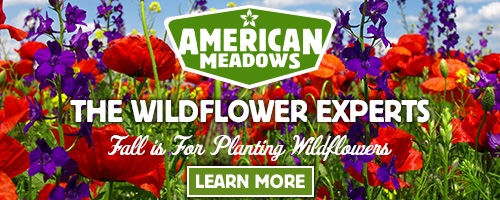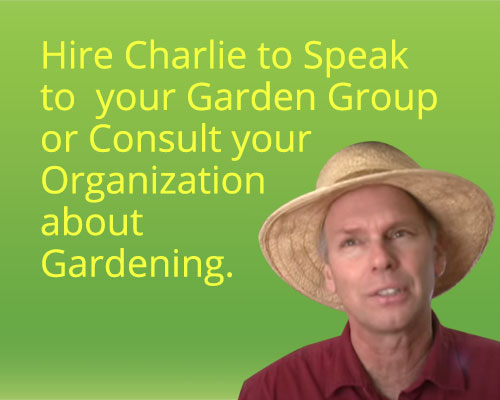Learn how to start your vegetable seeds indoors and care for them including seed selection, pots, soil, watering and light. For more garden videos, check out the National Gardening Association
Transcript
Hi I’m Charlie Nardozzi of the National Gardening Association. Today I’d like to talk to you about starting vegetable seeds indoors for transplanting outdoors into the garden. You don’t need a greenhouse like this one to start your own vegetable seeds indoors. You can do it at home and there’s lots of advantages to doing that. You can save money as well as grow a wider variety of vegetables than you normally would find in a garden center in spring. Some vegetables, such as carrots, beets, radishes, beans, and peas can be directly sown into the garden in the spring. Others, such as tomatoes, eggplants, and peppers, need a long growing season to grow so they need to be started indoors beforehand. There’s some that go both ways. Lettuce, melon, squash, and cucumbers can be directly sown into the garden from seed or started as transplants. Let me show you how.
First you’re going to have to start with your pots. There’s lots of different types to use but the most common are plastic pots. You can get trays like this one. For this larger one, you will be sewing in rows inside of here and then transplanting out to pots later. You can get cell packs that have four or six cells to them. We are planting right into individual cells themselves. Or you can try another type of material, like peat pots. Peat pots are made from compressed peat and the advantages are you can plant this pot and all into the soil. You don’t have to pop the transplant out. When you plant, the peat will decompose and the plant will continue to grow.
If you don’t want to have your own seed starting system, you can buy one that’s already set up for you. This one has a nice humidity dome to it. They have cell trays in here where you can have the seedlings. They have water reservoirs where they’ll self water and some of them even have heating mats.
Once you have your pots you’ll need some soil to put in them. What you want to get is a germinating mix of soil. This is a very lightweight soil. It’s sterilized and it’s really easy to use. Put these in the pots and pre-moisten it. Now you need some seeds. When you’re buying your seed packets at a garden center you have to look on the back of the package because there’s a lot of great information there. The first thing you want to look for is the date. You want to make sure it’s this year so it’s fresh seed. Also you want to look for days to germination, days to maturity, and how many weeks you’ll need to grow these indoors before you can transplant them outdoors. For example, tomatoes need about six to eight weeks indoors before you transplant them. Once you have everything together, let’s go sow some seeds.
I think I’d like to start with some tomato seeds. First I’m going to use a 6-cell pack and I’m going to fill it up with some moistened germinating mix. You want to pre-moisten the soil so that it goes right into the pack easier and you don’t have to worry about wetting it later. With the tomatoes, peppers or eggplants what you want to do is get about two seeds per cell. In order to get them in the right place I like to poke the tops with a pen or a pencil just to create a little hole, a little divot in there. What this does is directs the seeds and gets them at the proper depth. Then I’m going to tap in just a couple seeds per cell. Don’t worry if you get a few more in there than normal because we can always thin them later. Once they’re in you want to squeeze them down fill in the cells a little bit, add a little more soil if you need it, and then before you put them away make sure you put a plant marker. Mark down what it is you planted and when you did it. Put that right in there. Because if you’re starting a lot of seeds, it’s easy to get them confused. When they’re done get a plastic bag and pop them right in the plastic bag.
Most vegetable seeds don’t need light to germinate but they do need to be kept out of direct sun, warm and moist. Find the right place in your house. Check the bag every few days and as soon as you see some seedlings popping up, take them out of the bag and place them underneath some grow lights. You could use shop lights or grow lights. Whether it be a 2 or a 4 bulb fixture, it doesn’t matter. But what does matter is to have them on about 14 hours a day and place the seedlings within an inch or so of the lights. That way they’ll stay short and squat and sturdy. As soon as these leaves come up and it’s obvious how many you have, it’s time to snip off all the ones you don’t want to keep in there. Keep one healthy one per cell. Mist them every few days and put a little liquid fertilizer in there too. It’s a nice gentle way to water your plants without disturbing them.
Some seedlings, like tomatoes, like to grow really tall. The rule of thumb is whenever the seedling gets three times higher than the diameter of the pot you need to transplant it. The last thing to keep in mind is hardening off your plants. About a week before you put them in the garden bring them outdoors and let them stay out there for maybe an hour or two each day in a least sunny area. By the end of the week you can plant them in your garden. Take pride in the vegetable seedlings that you can start indoors on your own and enjoy the bounty of the harvest.


